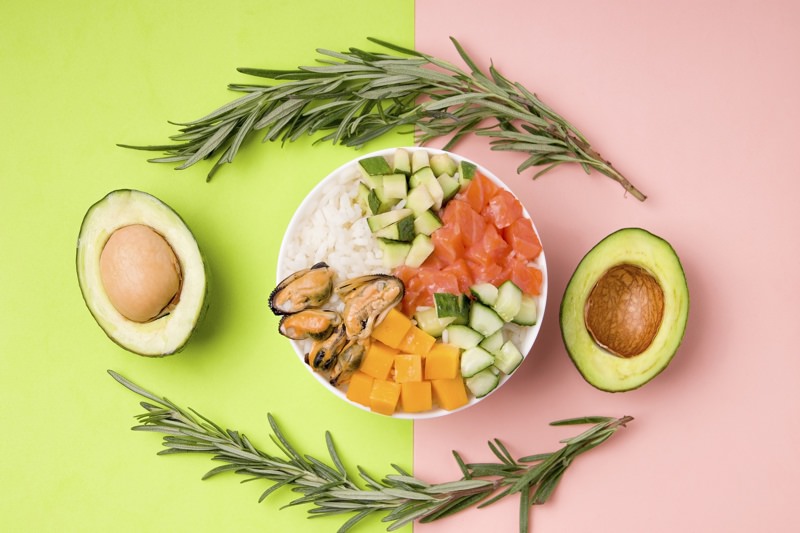What is a FODMAP Diet?
You’ve likely heard someone reference a “FODMAP diet” in your travels. What they are referring to is, in fact, a low FODMAP diet. FODMAPs are a group of carbohydrates that are poorly absorbed in the small intestine and are subsequently fermented in the small or large intestine. Fermentation is a good thing in many ways, but not when it occurs in your gut. The acronym stands for fermentable oligosaccharides, disaccharides, monosaccharides, and polyols. These hard-to-digest carbs are within certain types of foods and can cause intestinal distress for some.

FODMAP Diet Origins
The diet works by making a temporary change to eating in hopes of potentially mitigating symptoms of irritable bowel syndrome (IBS) and/or small intestinal bacterial overgrowth (SIBO). People with these conditions have trouble digesting and absorbing these carbs in their small intestine, causing uncomfortable digestive distress. Symptoms may include cramping, diarrhea, constipation, stomach bloating, and gas. The diet’s somewhat restrictive nature may help determine which foods are problematic and which foods reduce symptoms.
How Does a FODMAP Diet Work?
It works as an elimination-style diet. When a person begins, they eliminate all high-FODMAP foods from their diet. Hence why it can be rather restrictive. Once they have done this for a period of typically three to eight weeks, they will slowly begin to reintroduce them. Since foods are brought back one at a time, it allows time to feel and note how specific foods react with the body. It is also uncommon for a person to be sensitive to all of the FODMAPs, so this is an essential step in recognizing not only those that are an issue but also those that are not. Subsequently, knowing which specific foods cause trouble can help determine what foods to let go of long-term.
What Are Some High and Low Foods?
Many foods contain hard-to-handle FODMAP carbohydrates. Below we have listed the most common ones. However, head here for a more comprehensive list.
High FODMAP Foods:
- Grains: wheat-based products, amaranth, barley, and rye
- Legumes and pulses: baked beans, black-eyed peas, chickpeas, kidney beans, lentils, soybeans, and split peas
- Fruits: apples, apricots, cherries, figs, mangoes, nectarines, peaches, pears, plums, and watermelon
- Vegetables: asparagus, Brussels sprouts, cauliflower, garlic, leeks, mushrooms, onion, and snow peas
- Sweeteners: agave nectar, high-fructose corn syrup, honey, added polyols like sorbitol found in sugar-free mints and chewing gums
- Dairy: cottage cheese, cream cheese, milk, ricotta, and yogurt
- Beverages: chai or chamomile tea, coconut water
Low FODMAP Foods:
- Grains: brown rice, buckwheat, millet, oats, polenta, quinoa, tapioca
- Fruits: blueberries, kiwi, limes, mandarins, oranges, papaya, pineapple, rhubarb, and strawberries
- Vegetables: bean sprouts, bell peppers, carrot, eggplant, kale, tomato, spinach, and zucchini
- Sweeteners: maple syrup, sugar, and artificial sweeteners like Stevia
- Dairy: cheddar, feta, or parmesan cheese, lactose-free milk
- Beverages: black, white, or green tea, coffee, water
How to Spot in Packaged Foods
It is easy enough to know that certain whole foods in their original states can be consumed or not. However, once one of these foods transforms into something new, it can be a very different story. For instance, juices can be problematic for some because while citrus fruit is usually okay in its original form, so much has to be used to make a juice that it may, in turn, become troublesome. On the contrary, some vegetables that are bothersome when eaten in their original states may be able to be consumed in an infused oil. This is because oligosaccharides that are in onions and garlic are not oil-soluble. Thus, the bothersome compounds don’t make it into the final product.
Another issue is that many packaged foods will not explicitly state on the label when it contains one or more of the FODMAP no-nos. Knowing the specific words to look for on the ingredients label is key.
Is a FODMAP Diet For Everyone?
Not exactly. This is a rather specialized diet that is helpful to those suffering from specific conditions. Since it is quite restrictive, especially in the beginning, it can be harmful to some that may already be underweight or suffer from other food-related disorders. Those with gluten sensitivity would do well to research if the “O” in FODMAP is really the culprit that bothers them, namely the Oligosaccharides found in wheat.
Resources:
National Institutes of Health: Efficacy of the low FODMAP diet for treating irritable bowel syndrome: the evidence to date
John Hopkins Medicine: FODMAP Diet: What You Need to Know
